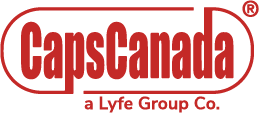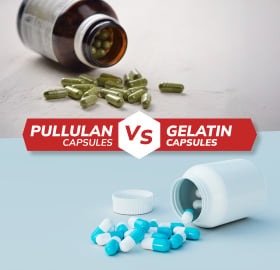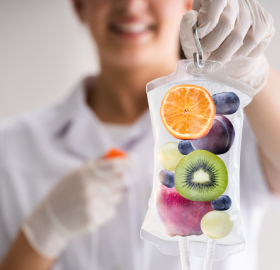In the vitamin and supplement world, meeting the demands of today’s consumers and their vision of what they want in their healthy lifestyle usually means choosing to use vegetarian capsules instead of gelatin capsules. While HPMC capsules are the most familiar type of vegetarian capsules, there is another option as well: pullulan capsules.
Here’s what you need to know about both, including an explanation of when it is best to choose one over the other.
What are HPMC capsules?
HPMC capsules are two-part hard capsules made from hydroxypropyl methylcellulose, a cellulose-based material derived from natural fibers. Because HPMC is plant-based, these capsules can receive vegetarian certification, such as the well-regarded Vegan Registration from the Vegan Society. However, the chemical process used to make HPMC means that these capsules are not organic.
What are pullulan capsules?
Pullulan capsules are two-part hard capsules made from pullulan, which is a viscous polysaccharide polymer that, in the case of capsule manufacturing, can be naturally fermented from tapioca. Pullulan capsules can receive vegetarian certification as well as organic certification.
What benefits do HPMC and pullulan capsules both provide?
HPMC and pullulan capsules have a lot in common, including:
• Support healthy lifestyle – HPMC and pullulan capsules both score many points with consumers who are looking for products that support their healthy lifestyle. In addition to being vegetarian they are also free of GMOs, gluten, starches and preservatives, and can receive Kosher and Halal certifications.
• Are safe and chemically stable – Both HPMC and pullulan are GRAS (i.e., have received Generally Recognized as Safe for human consumption status), chemically inert and therefore highly stable materials that will not chemically react to or cross-link with the capsule’s contents.
• Dissolve quickly – Similar to gelatin capsules, there are HPMC and pullulan capsules available that disintegrate in less than 15 minutes.
• Work with a variety of dry fill types – You can fill HPMC and pullulan capsules with powders, granules, beads, tablets or a mix of filling materials.
• Hide unpleasant tastes and odors – Both HPMC and pullulan capsules do a good job of masking the unpleasant tastes and odors of most formulations.
• Can be used on all types of filling machines – Both are suitable for use on manual, semi-automatic and high-speed capsule filling equipment.
Does it matter if you choose HPMC or pullulan capsules?
Quite often, either one of these vegetarian capsules will do a good job. However, you should:
• Use HPMC for moisture-sensitive formulations – HPMC capsules have a much lower moisture content than pullulan capsules: 4 to 8% for HPMC versus 10 to 13% for pullulan. Because of this, HPMC capsules are the best choice for moisture sensitive or hygroscopic formulations.
• Use HPMC for liquid fills – Because it is a water-soluble fiber, pullulan cannot be used for liquid-filled hard capsules (LFHCs); the liquid fill would cause the capsule to dissolve before it is consumed.
• Use pullulan for oxygen-sensitive formulations – Pullulan has an extremely low oxygen transmission rate and therefore creates an excellent oxygen barrier. In fact, pullulan film forms an oxygen barrier that is 300 times stronger than the same thickness HPMC film, and eight or nine times stronger than gelatin film. For this reason, pullulan capsules are the best choice for protecting oxygen-sensitive ingredients and formulations, such as Vitamin C, from oxidation.
What other differences are there between HPMC and pullulan capsules?
Here are some additional things to consider when deciding which type of vegetarian capsule to use for your product:
• Storage and handling conditions – HPMC capsules are less sensitive to harsher conditions and are able to withstand greater heat and relative humidity than pullulan capsules. HPMC capsules can tolerate temperatures of 59° to 86° Fahrenheit / 15° to 30° Celsius and relative humidity between 35 and 70%. Pullulan capsules should be kept at 59° to 77° Fahrenheit / 15° to 25° Celsius and in an area that has a relative humidity of 35 to 65%.
• Color – Pullulan capsules are crystal clear and very attractive, but are not available in colors. In addition to clear options, HPMC capsules are also available in a wide range of colors, including all-natural or PMS colors. These color choices can be very useful for product branding purposes as well as for hiding visually unappealing fill materials.
• Cost – HPMC capsules are considerably less expensive than pullulan capsules. Both are more expensive than gelatin capsules.
Of course, as with any product, there are significant quality differences between brands. For top-quality HPMC capsules, K-CAPS® are the capsule of choice for thousands of vitamin and nutritional supplement brands worldwide.















